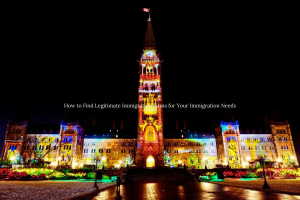
Unlocking the Future: Key Developments in Canada’s Immigration Landscape
As fall sets in and the holiday season approaches, Canada’s immigration system is abuzz with activity and potential changes. The Immigration, Refugees and Citizenship Canada (IRCC) plays a pivotal role in shaping the nation’s immigration policies, and there are several significant developments to watch out for as the year draws to a close.

1. Ministerial Mandate Letter:
Prime Minister Justin Trudeau may issue a new Ministerial Mandate letter, guiding the Immigration Minister in shaping Canada’s immigration policies. This letter holds the key to how the IRCC will act in the coming years.
The previous mandate letter emphasized welcoming newcomers under the Immigration Levels Plan, promoting family reunification, and boosting economic growth post-pandemic.
2. Immigration Levels Plan 2024-2026:
IRCC is expected to release its Immigration Levels Plan by November 1st, outlining targets for permanent resident admissions.
The plan covers various immigration classes (economic, family, refugee, and humanitarian) and programs.
Minister Marc Miller has expressed that he doesn’t foresee a decrease in immigration targets due to the pressing need.
3. Office of the Auditor General Report:
The Office of the Auditor General (OAG) is set to release an audit by year-end, evaluating IRCC’s processing of permanent resident applications for efficiency and effectiveness.
4. Express Entry:
Express Entry underwent significant changes this year, introducing category-based selection draws, including categories for French-language proficiency and work experience in sectors such as healthcare, STEM professions, trades, transport, and agriculture.
A notable shift towards candidates with STEM work experience is expected, reflecting Canada’s demand for skilled professionals.
All-program draws remain a primary pathway for Invitations to Apply (ITAs).
5. Parents and Grandparents Program (PGP):
IRCC invites parents and grandparents of Canadian citizens and permanent residents to apply for family class sponsorship annually.
In 2022, sponsors were chosen through a lottery, addressing a backlog of applications.
The 2023 plan targets an increase in PGP admissions, with a phased rise up to 36,000 by the end of 2025.
6. International Students:
Canada aims to welcome 900,000 international students this year, prompting a review of the International Student Program (ISP).
A Trusted Institutions Framework is expected to streamline study permit processing for designated learning institutions meeting IRCC criteria.
The policy allowing certain students to work full-time is set to expire on December 31, prompting a reevaluation by IRCC.
7. Tech Talent Strategy:
IRCC launched a Tech Talent Strategy to attract tech professionals to Canada.
An Innovation Stream under the International Mobility Program will facilitate hiring foreign workers without the need for a Labour Market Impact Assessment (LMIA).
IRCC is also exploring pathways for digital nomads to transition to Canadian work permits.
The landscape of Canada’s immigration system is dynamic and responsive to the nation’s evolving needs. As we approach the year’s end, these developments will shape the future of immigration in Canada, welcoming newcomers, reuniting families, and contributing to the country’s growth and prosperity. Stay tuned for more updates on Canada’s immigration journey.

